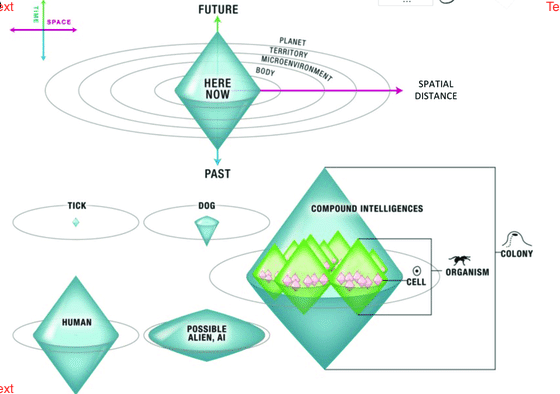The traditional division of intelligence into human and animal is no longer sufficient. Artificial intelligence (AI) has truly arrived.
Rapid advances in the development of AI have taken the media and people’s imagination by storm. On another front, research efforts in developmental biology and regenerative medicine are finding “intelligence” at the molecular and cellular levels.
We are being forced to reconsider: what is intelligence?
In this post, we will take a brief look at the more traditional understandings of intelligence and try to integrate some challenging new concepts.
Defining Intelligence
“You keep using that word. I do not think it means what you think it means.” —Inigo Montoya, The Princess Bride
Thinkers in China and India have mused over the nature of intelligence for thousands of years. In the West, the Greek philosophers offered some of the first sustained writings on the nature of intelligence. Aristotle defined the mind as “the part of the soul by which it knows and understands,” arguing that it is natural for humans to desire to know and understand. He described a “passive” and “active” intellect—not only do we actively perceive sensible objects, but the mind subconsciously and consciously acts on those perceptions. We will see how modern neuroscientific understanding of these components of intelligence lines up with Aristotle’s descriptions.
In philosophy, as in science, the long-standing view of intelligence is that there are two types: rational human and non-rational sentient animal intelligence. The Latin name given to the human species by Carl Linnaeus in 1735 is Homo sapiens, the wise man. Although we share some similar abilities with other animals, “rationality” or reason has always been the hallmark distinguishing us from other animals. Unique rational abilities include logic, reasoning, and syntactical language. The development of language has its own fascinating history, but that is a topic for another day.
Let’s consider what we know about human and animal intelligence. In 2007, psychologist David Premak described eight cognitive states in a seminal paper, “Human and Animal Cognition: Continuity and Discontinuity.” When studies reveal similarities between animal and human cognitive abilities, such as teaching, learning, and memory, he stresses the importance of asking, “What is the dissimilarity?” Premak states: “This question will prevent mistaking similarity with equivalence.” His point is that animal competencies are usually limited to single goals or are domain-specific, while human competencies cover multiple goals and are domain-general. These differences have been discovered using new imaging and recording techniques. The communication and scope of a being’s external goals are reflected in the structural differences and complexity found in a given animal or human brain.
Molecular and Cellular Intelligence? (or Intelligence on a Spectrum)
However, using the term intelligence has become more complicated. Are human and animal intelligence the only kind of sentient or biological intelligence? Dr. Michael Levin argues that we need a new way of defining intelligence in biological systems. Levin is the Director of the Allen Discovery Center and the Center for Regenerative and Developmental Biology (both at Tufts University) and co-director of the Institute for Computationally Designed Organisms.
In an interview with the intriguing title, “Can Cells Think,” Dr. Michael Levin describes how his work in developmental biology and regenerative medicine has changed how he thinks about intelligence. Levin and colleagues have adopted a simplified definition of cognition: the ability to pursue goals in a variety of spaces and the ability to use novel means when necessary. These spaces can be “anatomical, physiological, transcriptional, and 3D (traditional behavioral) spaces.” What prompted them to develop their new definition? The answer to that question reveals some startling biological phenomena of which we can only scratch the surface!
Dr. Levin describes how developmental biology traces the trajectory of intelligence from “just physics and chemistry” to a complex mind.
[T]he reason I’m so interested in developmental biology specifically is that it's an amazing example where [in] just a few days and sometimes a few weeks you start off with something that people would call just physics or just chemistry [but as it becomes some sort of organism] it has preferences, the ability to learn. If it's human, eventually, it will have the ability to use language to expound on why it’s not a machine and so forth.
Using examples from nature, Levin describes how the simple organism Lachrymaria is able to navigate around its environment and fulfill all its metabolic needs without a brain or nervous system. The flatworm Planaria can regenerate whole new worms-including the brain!- from any part of its body. The brain of a butterfly is an entirely new structure after its metamorphosis, but it retains information from its life as a caterpillar. Along with the regeneration of limbs in a salamander, these observations led Levin and colleagues to reclaim the common sense understanding of purposeful or goal-directed activity in biological systems, even down to the cellular and molecular level.
He applies this definition in his theory of intelligence, TAME (Technological Approach to Mind Everywhere). He uses the term “cognitive light cones” to describe the model he has developed. The image below captures the essence of his model.

Concept by Michael Levin; artwork by Jeremy Guay of Peregrine Creative.
Is Goal-Directed Behavior Enough to Define Intelligence?
Even with a strong rationale—because it's measurable, testable, and actually moves research forward—in the overall discussion of the nature of intelligence, the useful definition of goal-directedness does not mean that we should ignore other cognitive capacities active in the creation of human knowledge. These include language, learning, memory, problem-solving, and attention. Understanding the underlying mechanisms of these elements of cognition is the goal of current research in cognitive neuroscience. That research is potentially and especially useful for understanding diseases of the brain, along with brain health and educational interventions. If we want a wider context for a definition of intelligence, it turns out that Philosophy and neuroscience have something to add to our understanding. We will explore that contribution in Part 2.

